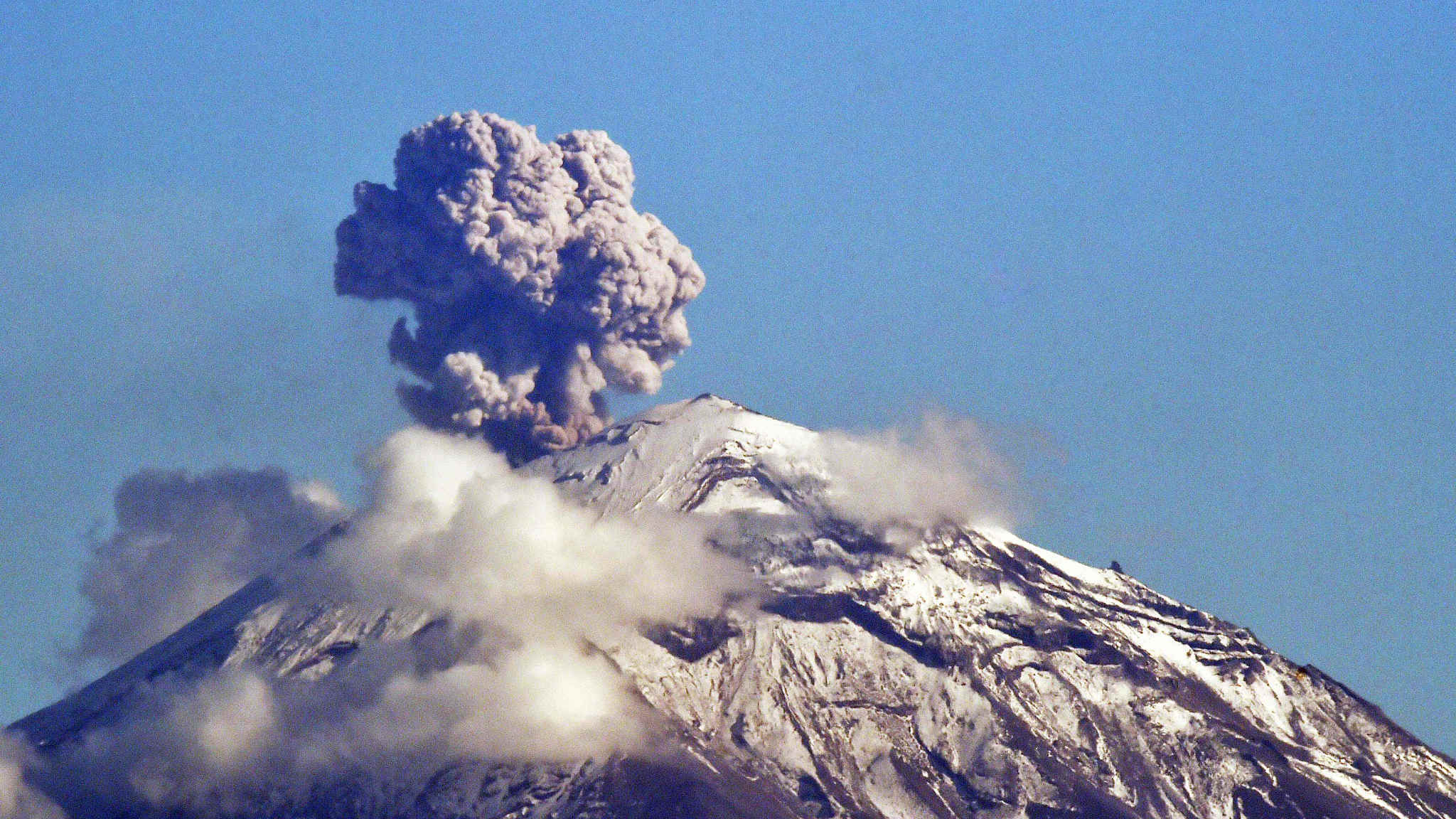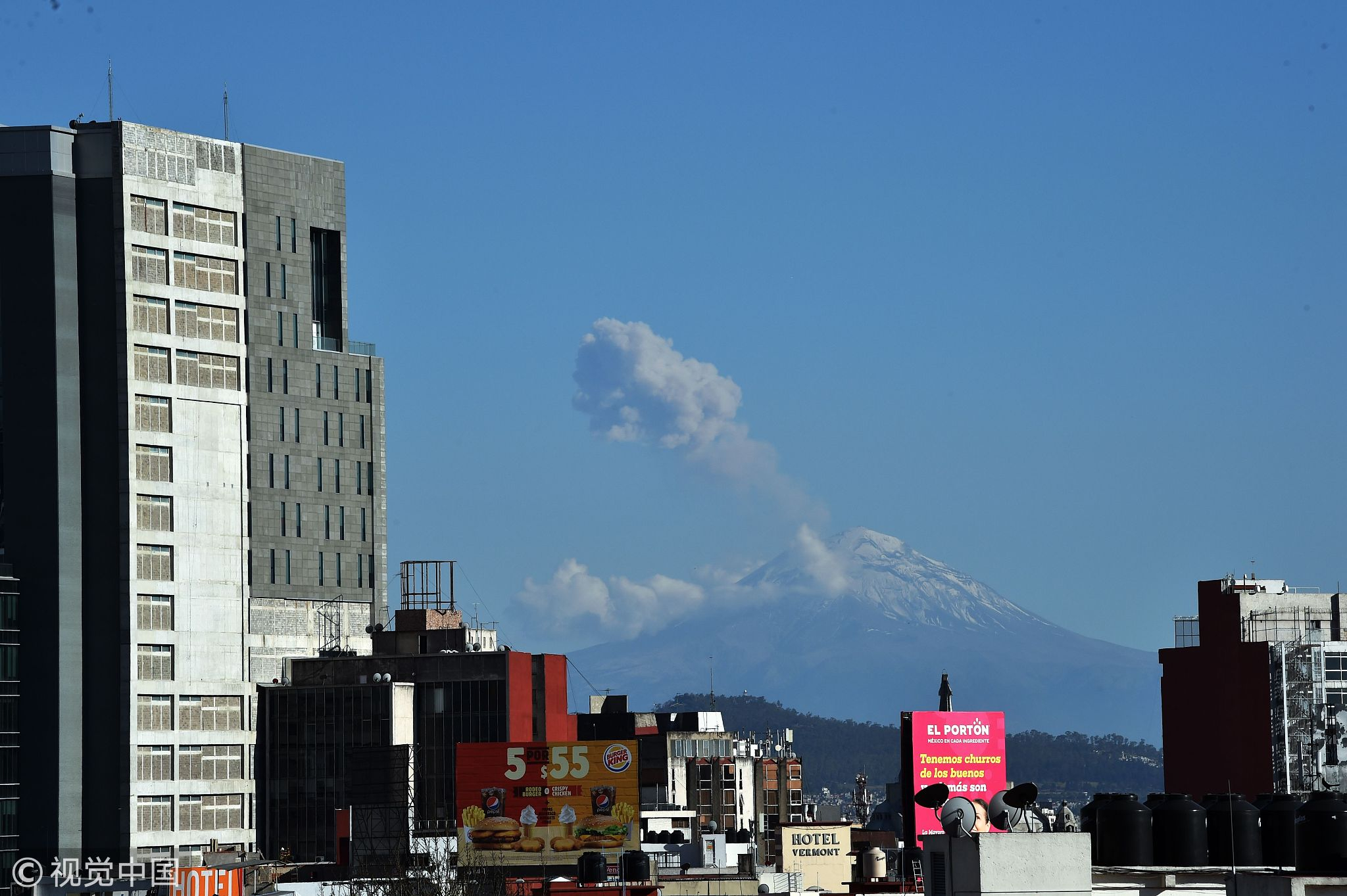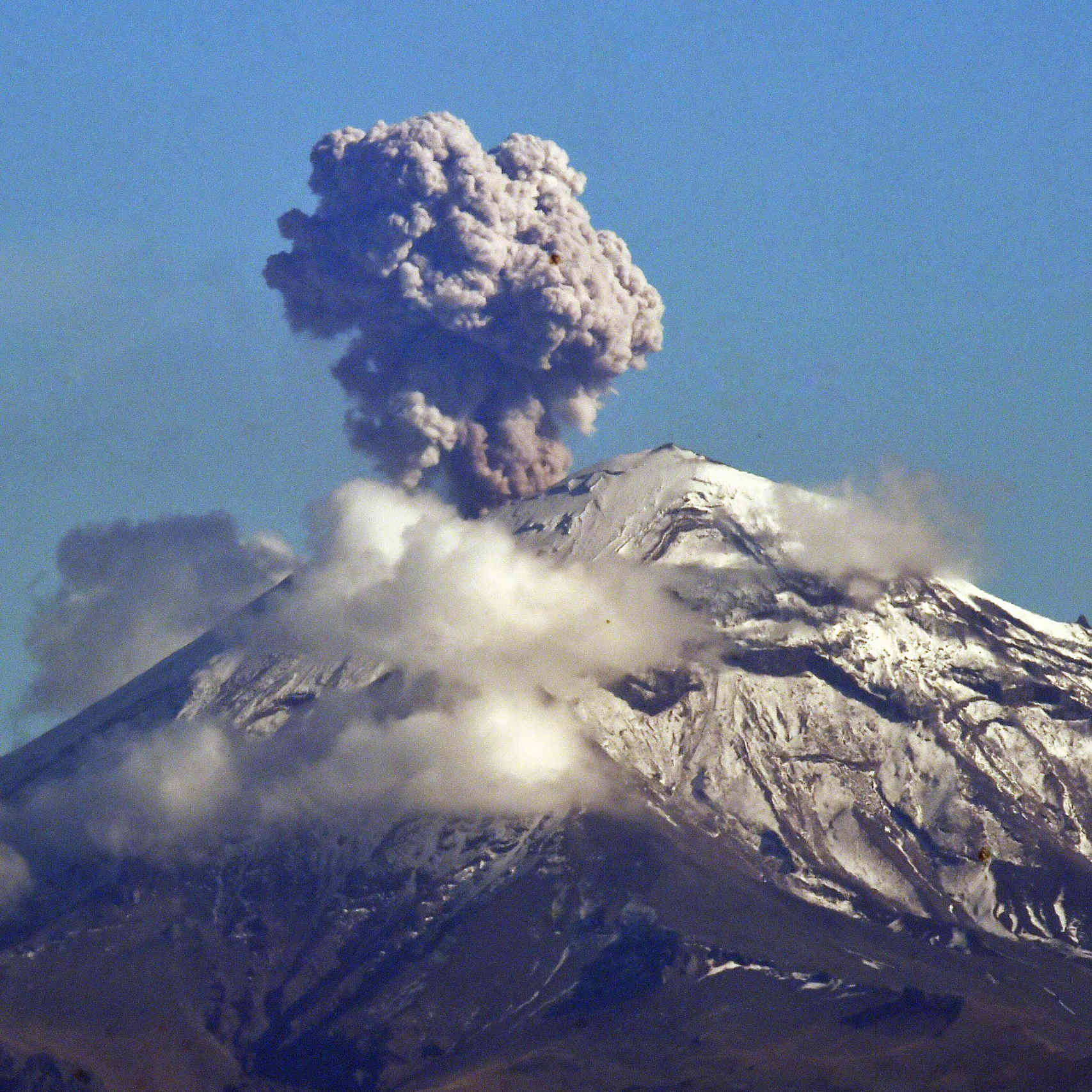
nature
16:00, 03-Dec-2018
Mexico's second highest peak spews ash and smoke
Updated
15:21, 06-Dec-2018
CGTN

Popocatepetl Volcano, which is located about 55 km from Mexico City, spewed ash and smoke on December 2, 2018. According to Mexico's National Civil Protection System, Popocatepetl had an exhalation of 2.5 kilometers high on Sunday, with moderate ash content.

Popocatepetl Volcano spews ash and smoke as seen from Mexico City, December 2, 2018. /VCG Photo
Popocatepetl Volcano spews ash and smoke as seen from Mexico City, December 2, 2018. /VCG Photo
According to the Natural History Museum, Popocatepetl is listed as one of the 10-most populated volcanoes in the world. Around 30 million people live within a 70km radius of the volcano's summit.
Mexico's National Center for Prevention of Disasters (CENAPRED) urges people not to approach the volcano, especially the crater. To people who are nearby, it's recommended to wash the eyes and throat with pure water. Contact lenses should be avoided to reduce eye irritation and water tanks should be covered in case of contamination.

The Popocatepetl Volcano is located about 55 km from Mexico City. /VCG Photo
The Popocatepetl Volcano is located about 55 km from Mexico City. /VCG Photo
Popocatepetl (Aztec for "Smoking Mountain") is one of Mexico's most active volcanoes. The giant mudflows that the eruptions produced even buried Aztec settlements and entire pyramids hundreds of years ago. Located in Central Mexico, the volcano is the second highest peak in the country after Citlaltépetl.

Popocatepetl Volcano is the second highest peak in Mexico. /VPG Photo
Popocatepetl Volcano is the second highest peak in Mexico. /VPG Photo
Before it came back to life in 1994, Popocatepetl was dormant for almost 50 years. Since then, the volcano has been producing powerful explosions irregularly.
CENAPRED reports that during October 31 to November 6, there were 89-192 steam-and-gas emissions from Popocatépetl each day. The Alert Level is currently sat at Yellow, Phase Two (middle level on a three-color scale), which means there is an increase in gas and water vapor.

SITEMAP
Copyright © 2018 CGTN. Beijing ICP prepared NO.16065310-3
Copyright © 2018 CGTN. Beijing ICP prepared NO.16065310-3